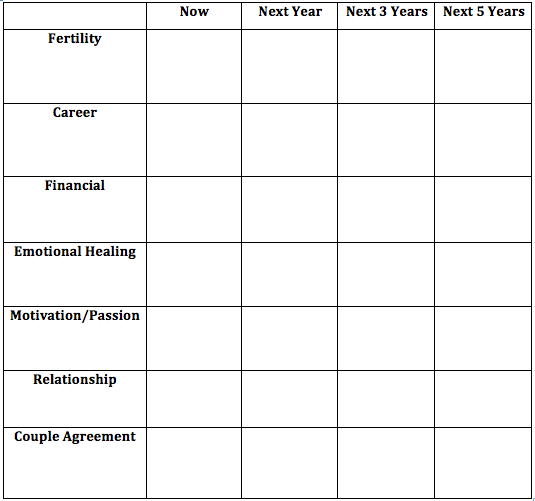
You will have a baby at the wrong time because there is no such thing as a right time. Could there ever be a right time to set off an explosion in the midst of your (relatively) ordered life?
Instead of waiting for life to magically pause, your goal should be to select the “good enough” or “least wrong” time. That is, if you even want kids, which not everybody does.
Take a look at the really, really wrong times you should try to avoid: If you and your partner are considering breaking up; when you just lost a job; when one of you is ill, receiving treatment, or on medications or treatments unsafe for pregnancy. Also: When you’re starting a graduate or professional program; in the middle of a make-or-break project at work; or moving to a state with no mandated fertility coverage.
Then consider seven major factors that will affect your ability to have and raise a child:
Use this chart, or draw up one like it. Put an X in the time column that best describes your readiness in light of the seven factors on the left hand side. Have your partner do the same. The column with the most checks wins, although you may want to give more weight to some factors than others.

This might be give you some idea of the optimum time for you. But remember, no moment is perfect. Children have a wonderful of way of messing with our carefully-laid plans, so you might as well get used to it.
More Must-Reads from TIME
- Cybersecurity Experts Are Sounding the Alarm on DOGE
- Meet the 2025 Women of the Year
- The Harsh Truth About Disability Inclusion
- Why Do More Young Adults Have Cancer?
- Colman Domingo Leads With Radical Love
- How to Get Better at Doing Things Alone
- Michelle Zauner Stares Down the Darkness
Contact us at letters@time.com